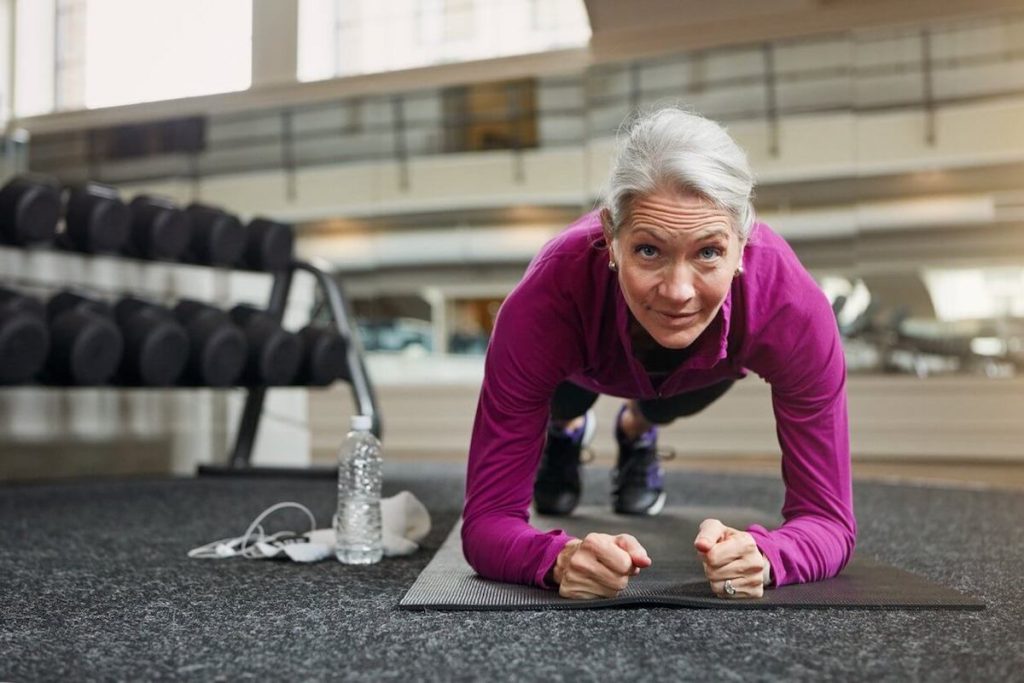
Introduction
Menopause marks a significant milestone in a woman’s life, signaling the end of her reproductive years. Alongside the myriad of changes that accompany this transition, one of the foremost concerns is bone health. As estrogen and progesterone levels decline during menopause, women become more susceptible to conditions like osteopenia and osteoporosis, characterized by a decrease in bone mineral density and increased fracture risk. In this comprehensive guide, we delve into the intersection of menopause, bone health, and exercise, exploring the mechanisms behind bone loss, the role of exercise in mitigating its effects, and evidence-based recommendations for maintaining skeletal integrity during this stage of life.
Understanding Menopause and Bone Health
Menopause, typically occurring around the age of 51, marks the cessation of menstruation and the decline in ovarian function. This hormonal shift entails a reduction in estrogen and progesterone levels, hormones crucial for maintaining bone density and strength. Estrogen, in particular, plays a pivotal role in inhibiting bone resorption, the process by which old bone tissue is broken down. With estrogen levels dwindling post-menopause, bone resorption outpaces bone formation, leading to a gradual decline in bone mass and quality.
The Cascade of Bone Loss
The onset of menopause heralds an accelerated phase of bone loss, placing women at increased risk of osteopenia and osteoporosis. Osteopenia, characterized by low bone mineral density, represents an intermediary stage between normal bone density and osteoporosis, a condition marked by significantly reduced bone density and increased susceptibility to fractures. This cascade of bone loss underscores the importance of proactive measures to preserve skeletal health during and after menopause.
The Role of Exercise in Bone Health
Exercise emerges as a cornerstone in the management and prevention of osteoporosis during menopause. Numerous studies attest to the beneficial effects of physical activity on bone mineral density, with particular emphasis on weight-bearing and resistance exercises. By subjecting bones to mechanical stress, exercise stimulates bone remodeling, the process by which old bone tissue is replaced with new, stronger tissue. Moreover, exercise enhances muscle strength and balance, reducing the risk of falls and subsequent fractures, a critical consideration in the context of osteoporosis.
Impact of Exercise on Bone Mineral Density
Research indicates that exercise exerts a moderate yet significant effect on bone mineral density, particularly in the lumbar spine, femur, and hip regions, which are most susceptible to osteoporotic fractures. Both aerobic and resistance exercises confer benefits to bone health, with a focus on activities that impose impact and stress on skeletal structures. However, certain activities, such as swimming and cycling, may not provide the same osteogenic stimulus and are thus less effective in preserving bone density.
Exercise Recommendations for Bone Health
To optimize bone health during menopause, individuals are encouraged to incorporate a variety of exercises targeting different muscle groups and bone regions. The following are evidence-based recommendations derived from the 2022 UK Consensus Statement on Physical Activity and Exercise for Osteoporosis:
- Impact Exercises: Gradually progress from low-impact activities like walking to moderate-impact exercises such as jumping and jogging. Aim for a minimum of 20 minutes of impact exercise most days of the week, with at least 50 impacts per session.
- Resistance Training: Integrate resistance training, preferably using weights, to promote muscle strength and bone density. Focus on exercises that target the spine and hip extensors, with a frequency of 2-3 sessions per week comprising 3-4 sets per exercise.
- Balance Challenges: Incorporate exercises that challenge balance and proprioception, such as tai chi or yoga, to reduce the risk of falls and fractures. Aim for 2-3 sessions per week, increasing frequency if a history of falls is present.
- Core Strengthening: Engage in core-strengthening exercises, including those that target the erector spinae muscles, to improve posture and spinal stability. Activities like swimming, yoga, and Pilates can also contribute to core strength and stability.
- Progressive Overload: Gradually increase the intensity and difficulty of exercises to promote ongoing adaptations and improvements in bone health. Strive to work at 80-85% of your maximum capacity to maximize bone-stimulating effects.
Tailoring Exercise Programs to Individual Needs
It’s essential to tailor exercise programs to individual needs and bone health status, accounting for factors such as baseline bone density and existing medical conditions. Consultation with a qualified exercise professional can help design personalized exercise regimens that optimize bone health while minimizing the risk of injury.
Conclusion
Menopause represents a transformative phase in a woman’s life, accompanied by hormonal changes that impact bone health. Through targeted exercise interventions, women can mitigate the effects of menopause-related bone loss and reduce their risk of osteoporotic fractures. By embracing a multifaceted approach that incorporates impact exercises, resistance training, balance challenges, and core strengthening, individuals can fortify their skeletal integrity and embrace vitality and mobility during this new chapter of life.
References
- International Osteoporosis Foundation. (n.d.). Exercise and Bone Health.
- National Osteoporosis Foundation. (n.d.). Exercise for Strong Bones.
- UK Consensus Statement on Physical Activity and Exercise for Osteoporosis. (2022).
- American College of Sports Medicine. (2017). ACSM’s Guidelines for Exercise Testing and Prescription.
- Centers for Disease Control and Prevention. (2020). Physical Activity for Bone Health.